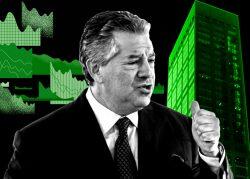Manhattan’s largest office landlord wants to bring a casino to Times Square. But for the moment the bets it’s hedging are on its balance sheet.
In recent months, SL Green Realty retired $800 million in corporate bonds, entered into interest-rate cap contracts on $270 million of property debt and set up $1.25 billion worth of interest rate swaps.
The threat to the company’s earnings posed by the economic environment have made “interest rate hedging and debt reduction our number one priority for the foreseeable future,” CEO Marc Holliday said on the real estate investment trust’s third-quarter earnings call Thursday.
Read more


SL Green retired the $800 million of corporate debt through a mix of refinancings and payoffs with proceeds from asset sales. The company also hedged its debt with a series of swaps and caps — financial contracts that protect borrowers if interest rates rise above specified thresholds.
Those contracts, however, are quickly becoming more expensive. In some cases, the costs of interest-rate caps have surged more than tenfold in the past year.
But SL Green Chief Financial Officer Matt DiLiberto noted that given how fast interest rates are rising, the savings the company realizes by entering into the contracts “far exceeds whatever incremental costs may be embedded in them.”
About 80 percent of the company’s debt is now hedged, he said.
The REIT reported funds from operations of $1.66 per share for the third quarter, down from $1.78 per share in the same period last year but slightly ahead of the consensus estimate of $1.64.
Highlights for the quarter included signing mutual fund giant Franklin Templeton to nearly 350,000 square feet at One Madison Avenue and the sale of almost 415,000 square feet at the Lipstick Building at 885 Third Avenue to Memorial Sloan Kettering for $300 million.
SL Green signed 32 leasing deals in Manhattan for a little more than 930,000 square feet during the quarter, up from 445,000 square feet last year, which executives said is an encouraging sign for the fourth quarter.
But the company is facing challenges beyond the office market’s murky future, including a variety of mixed economic indicators and the specter of a recession. Holliday said he expects occupancy across SL Green’s portfolio will continue to hover around 90 percent “until things turn around.”
